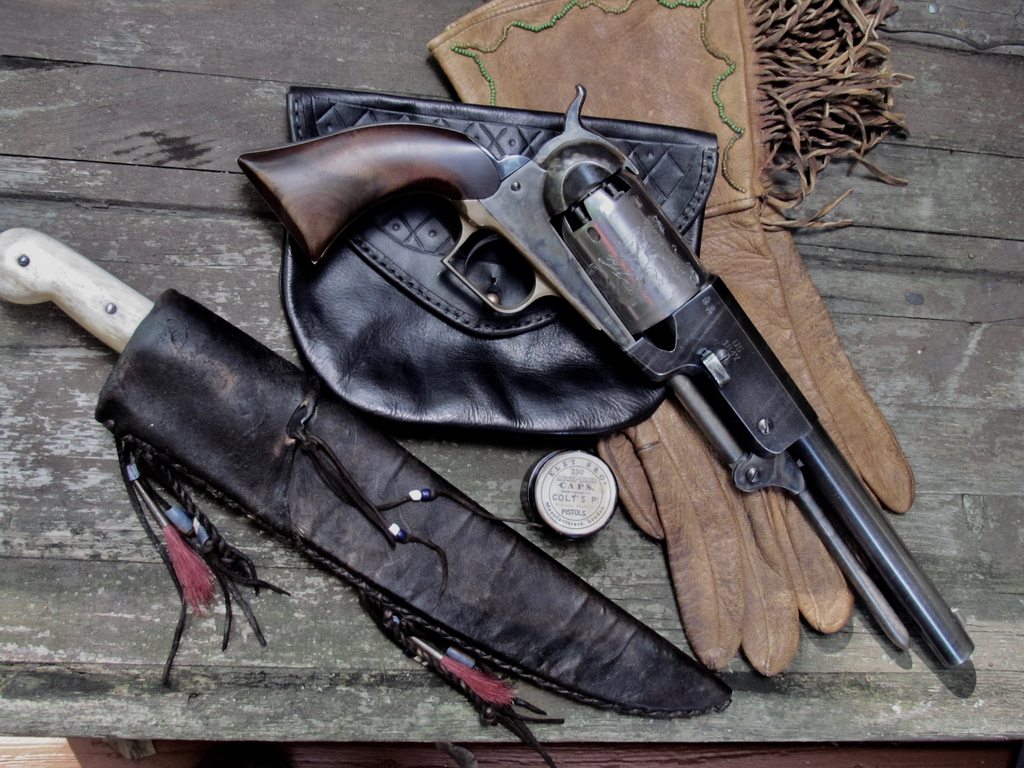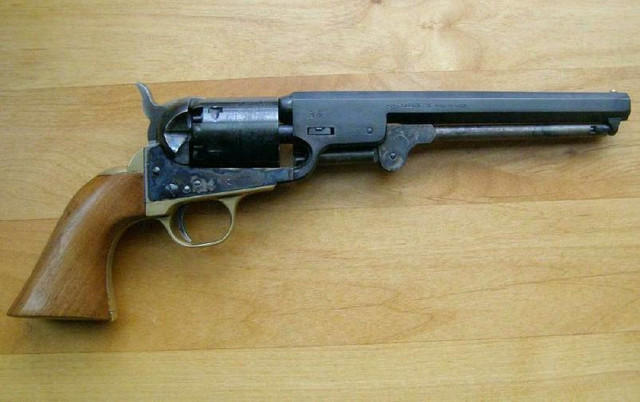- Joined
- May 30, 2020
- Messages
- 831
- Reaction score
- 758
Here's an update to my original post, I now realize it might've been a little mis-leading; I didn't intend to 'refinish' the Walker as much as to patina it. I'm mostly an old flintlock and percussion rifle shooter with an occasional daliance into percussion pistols. Am not a re-enactor though I respect living history. I have several antique arms and am pretty sure I'll never be able to aquire an original 1847 Colt Walker. Fiddling with this reproduction is more fun than I'd expected.
For me, old guns are never as attractive as when they've seen a bit of robust field use. In my furniture and in my arms collecting, I love old wood and old metal with a little patina.
It's with this in mind that I approached a mild facelift of the Uberti Walker, the pictures below chronicle some of the things I did. I'm still in process on the project with more barrel/ frame attention to come. I have a good start but have decided to mellow it out a bit more.
--------------------------------------------------------------
#1 Rather than remove the blue at once with a chemical remover I used a Lead Away cloth to gently take the finish down a little where it would've seen holster or carry wear, leaving bright blue in place receiving less wear. Uberti's charcoal blue finish is delicate to begin with so it didn't take much;
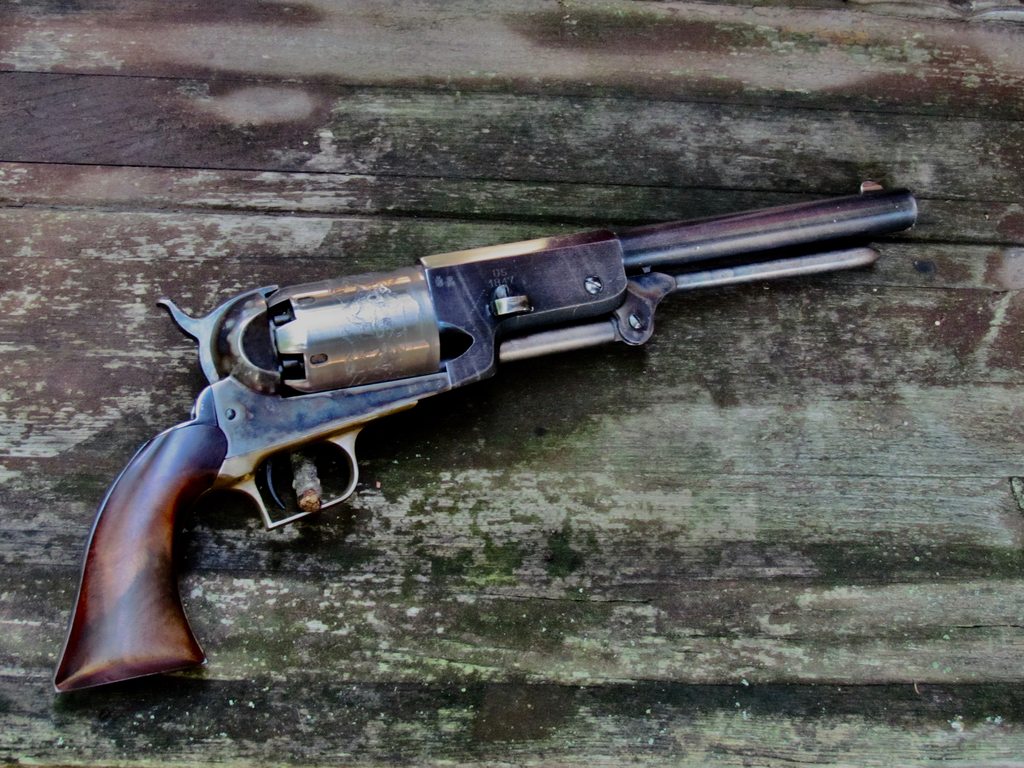
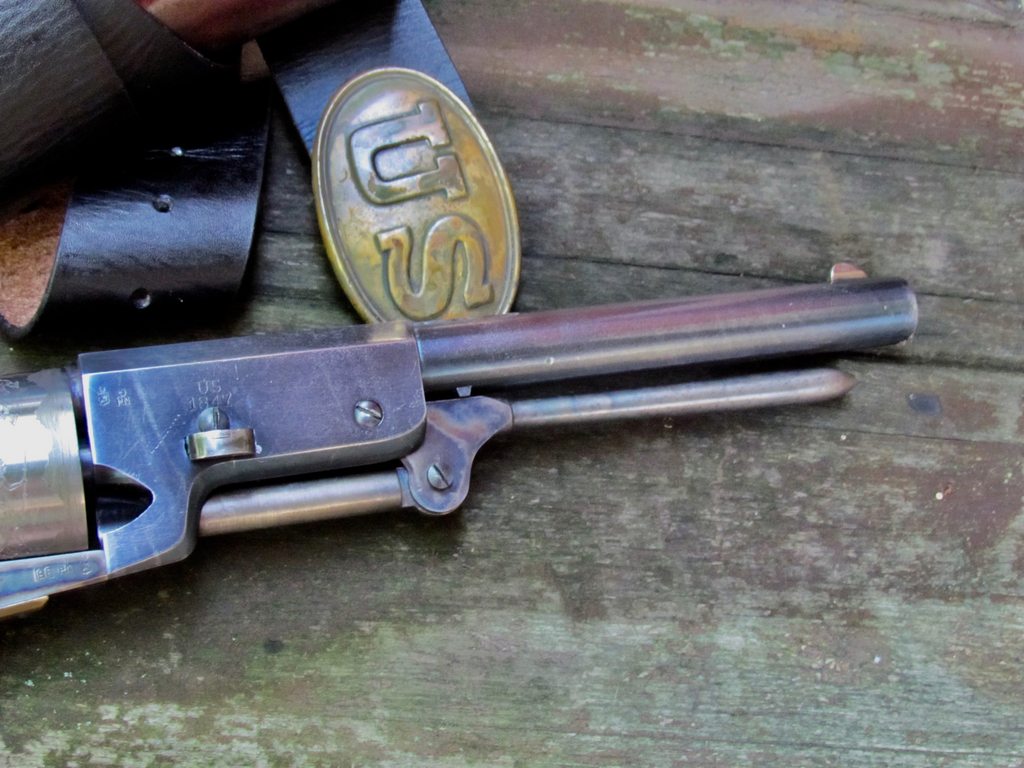
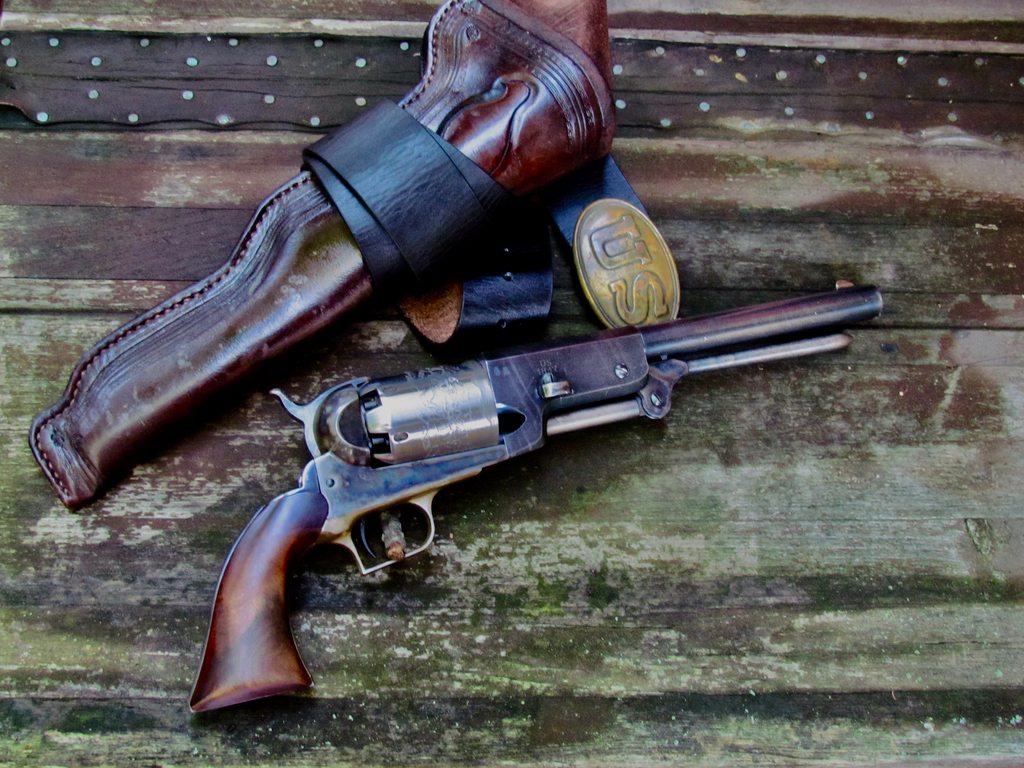
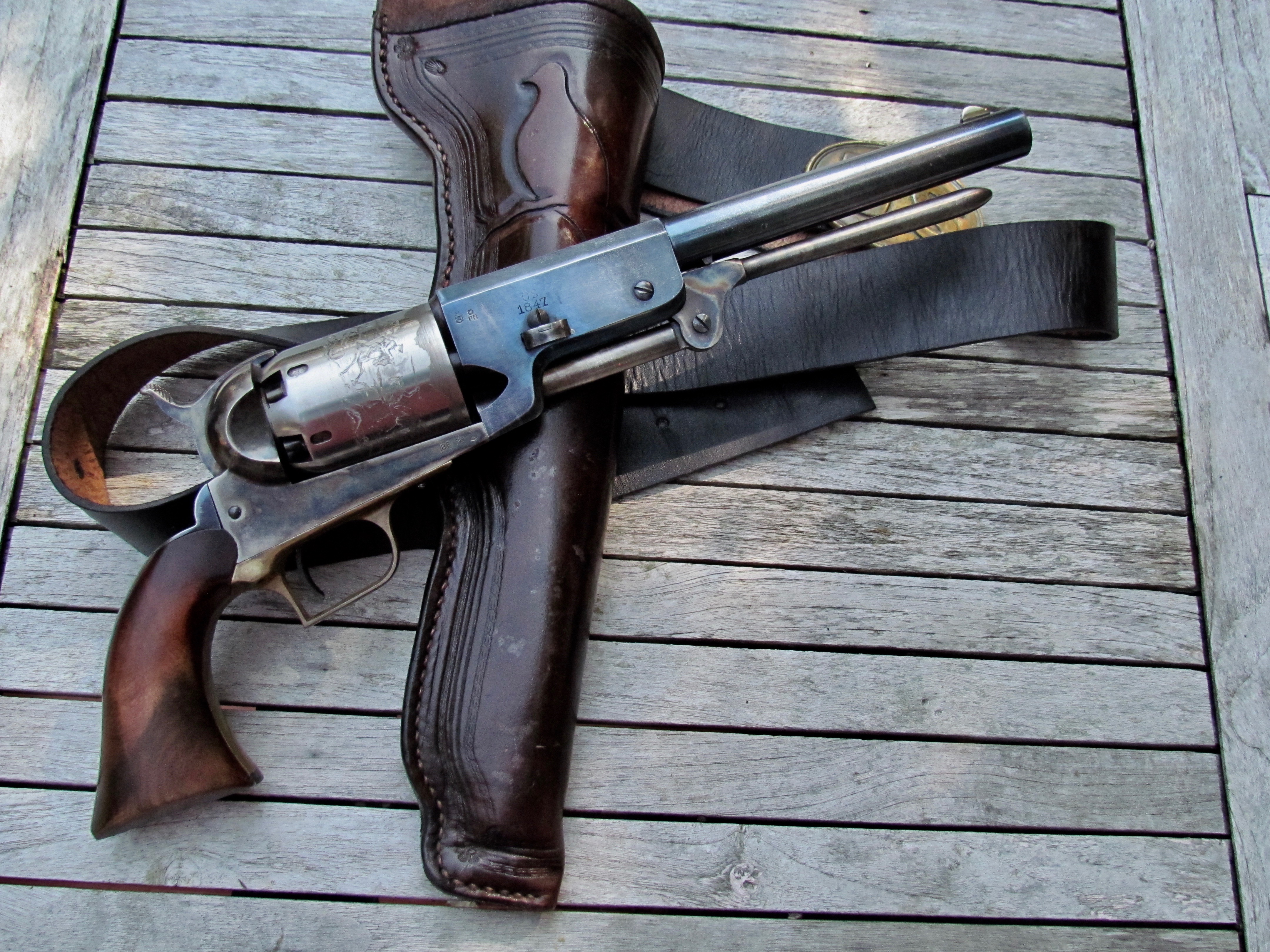
#2 I used the white viegar and salt technique to make the brass a more mustard-yellow vs the bright and shiny brass of a new gun, for me an improvement;
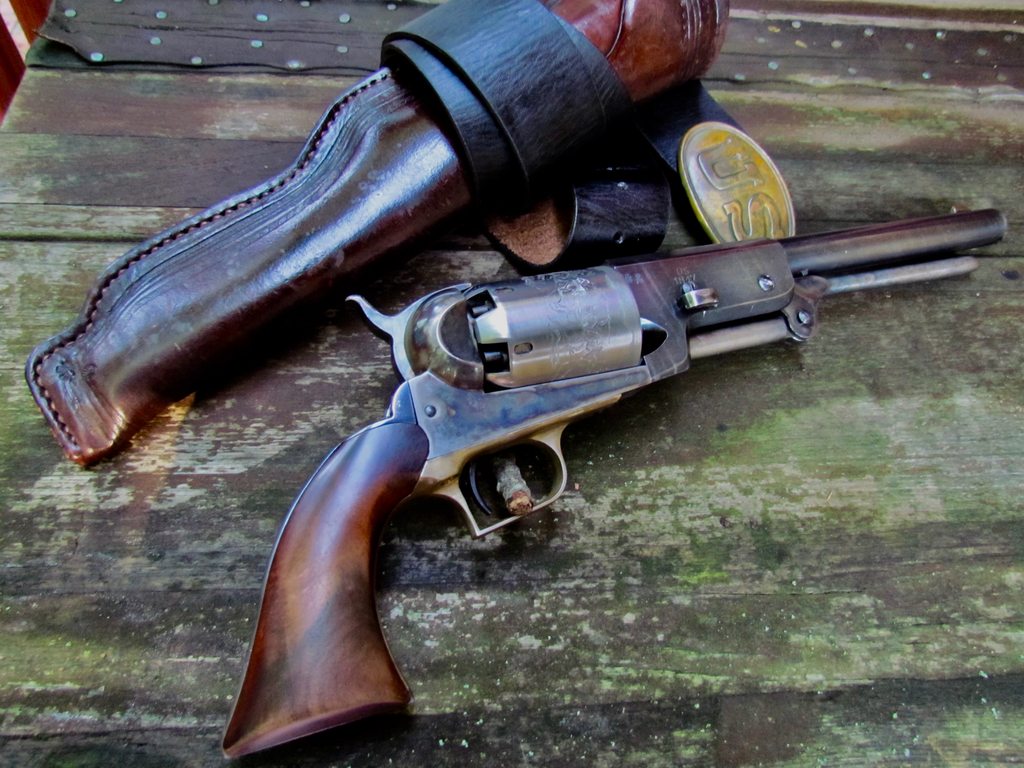
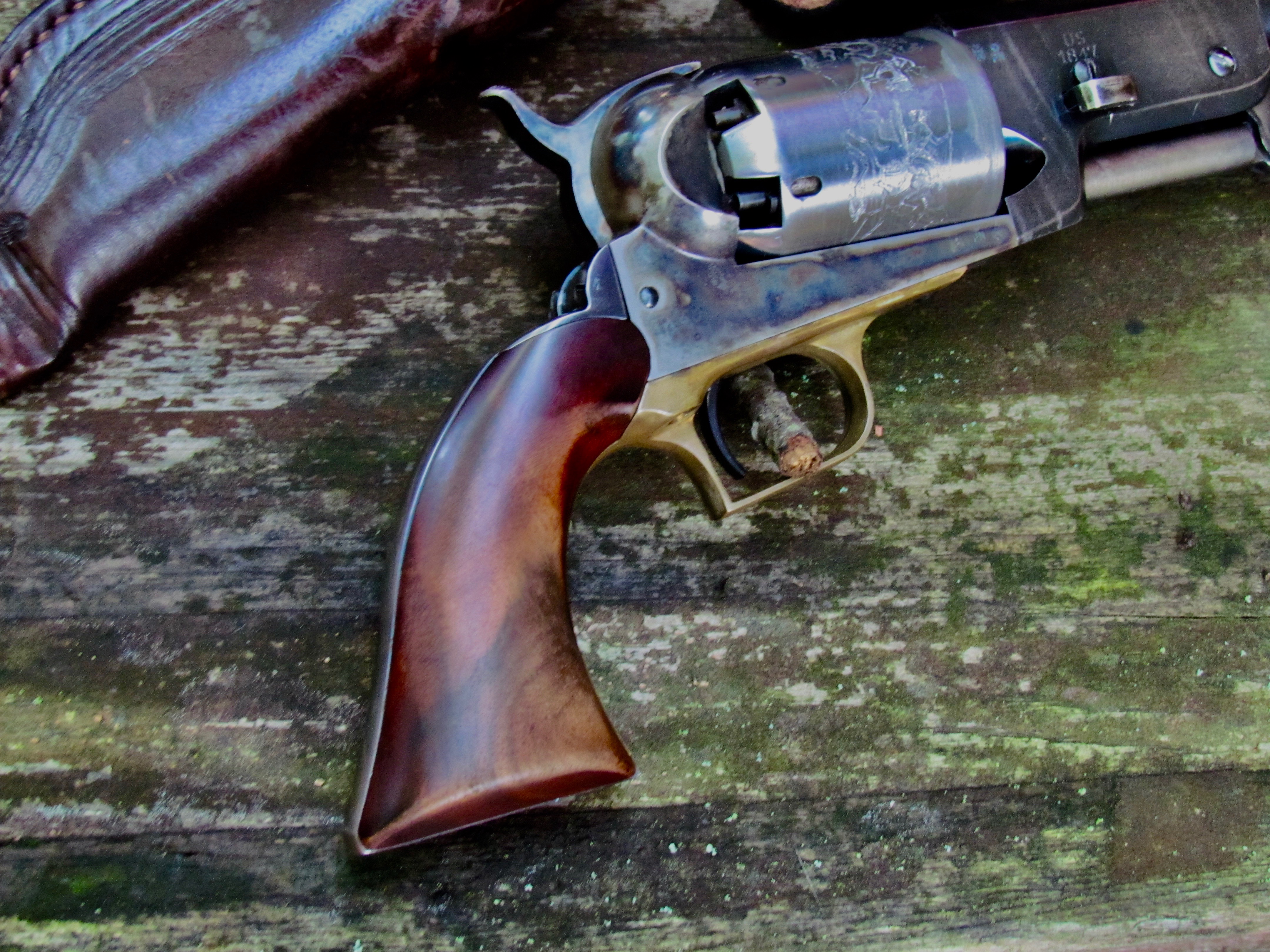
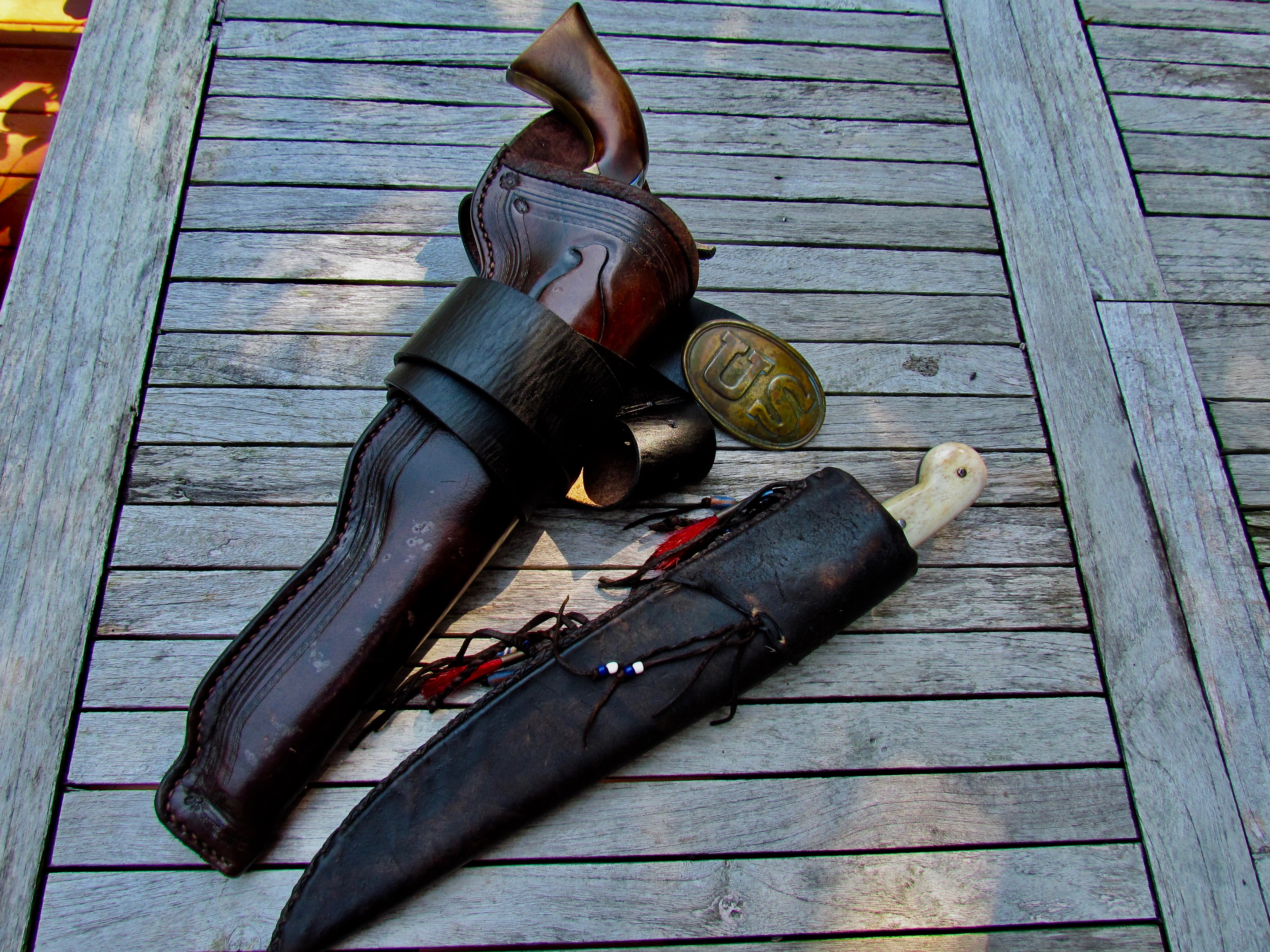
#3 I did not chemically remove the varnish from the grips but rather used a fine steel wool to slowly remove the heavy, shiny Italian varnish. This took a long time, hours of steel wooling and cloth polishing and the results for me are mixed. I definitely like them more but stripping the varnish revealed that the grips are not walnut. I lwould prefer real walnut grips to True Oil but haven't had any luck finding a pair so far. These too are a work in progress;
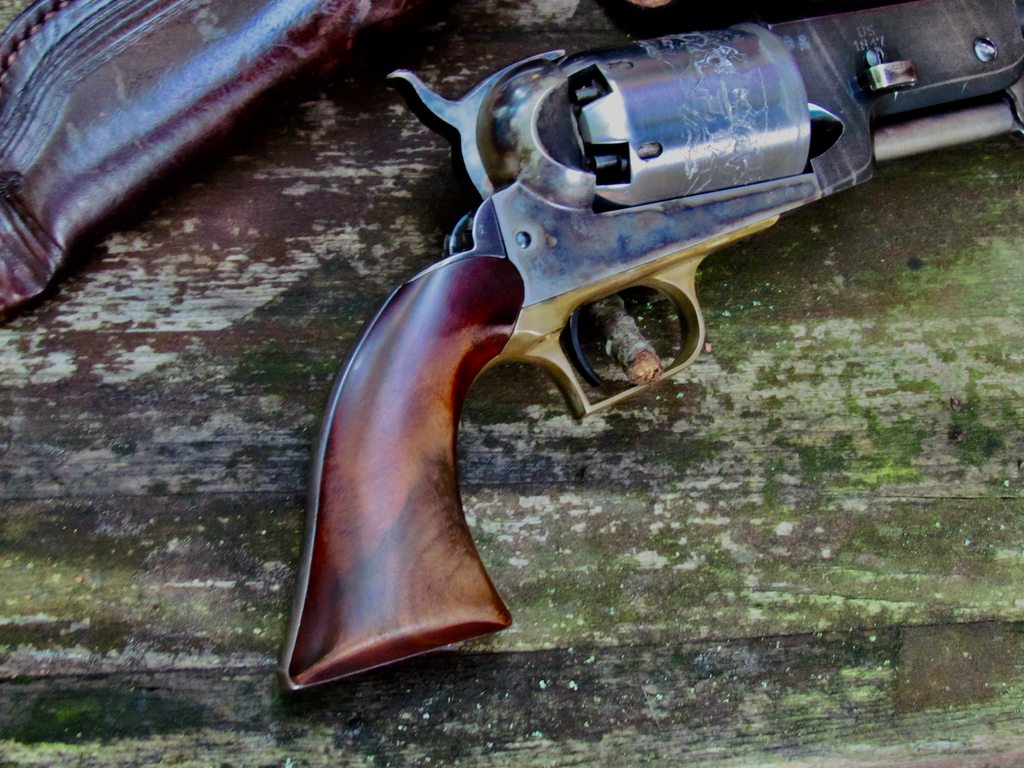
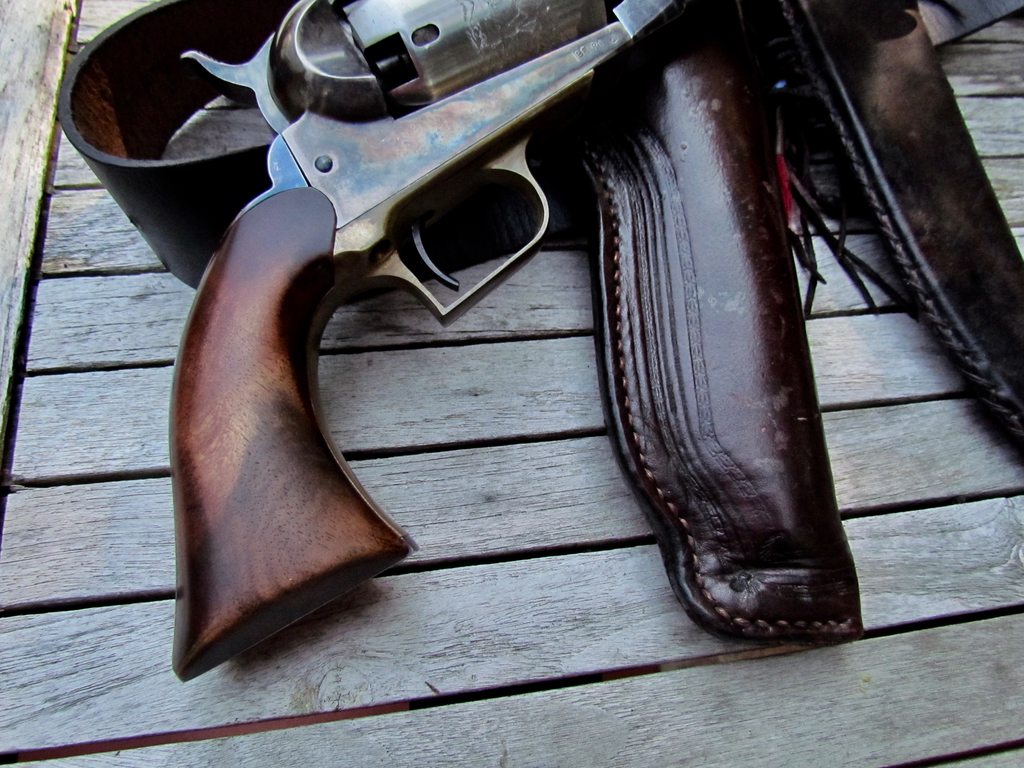
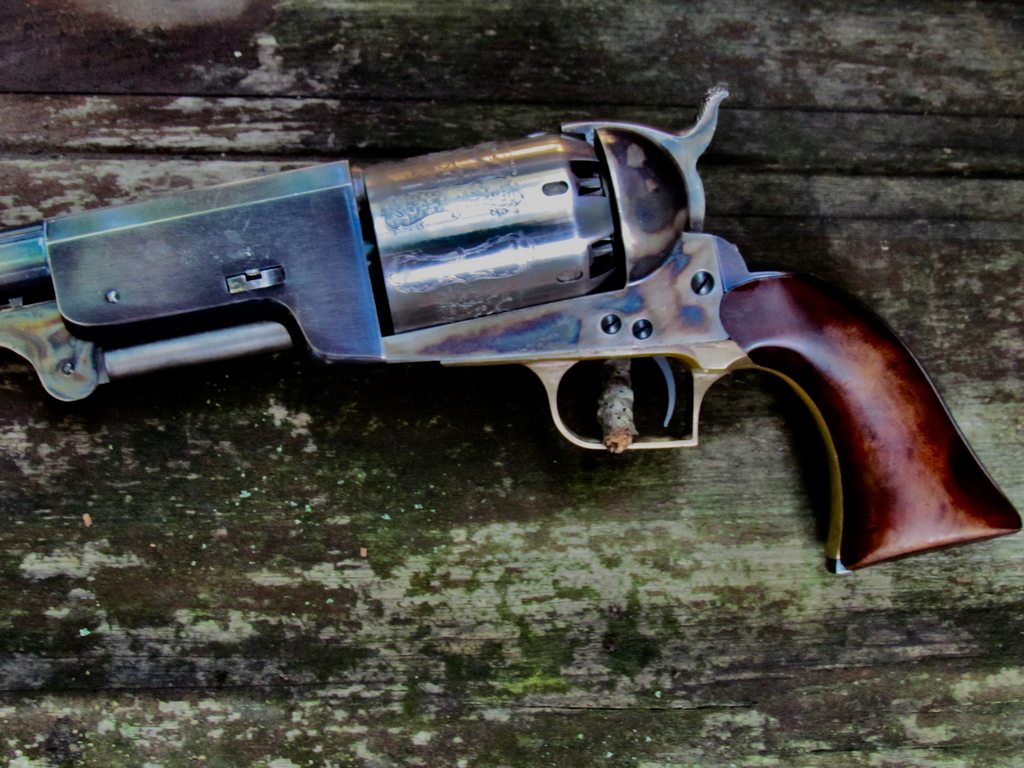
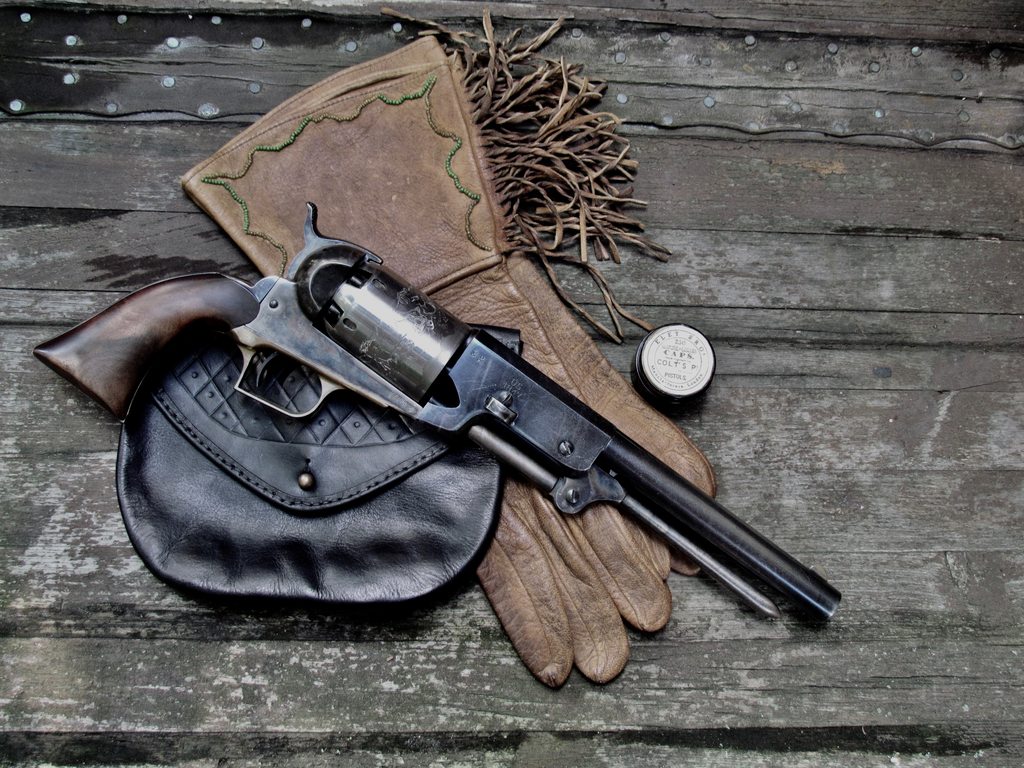
For me, old guns are never as attractive as when they've seen a bit of robust field use. In my furniture and in my arms collecting, I love old wood and old metal with a little patina.
It's with this in mind that I approached a mild facelift of the Uberti Walker, the pictures below chronicle some of the things I did. I'm still in process on the project with more barrel/ frame attention to come. I have a good start but have decided to mellow it out a bit more.
--------------------------------------------------------------
#1 Rather than remove the blue at once with a chemical remover I used a Lead Away cloth to gently take the finish down a little where it would've seen holster or carry wear, leaving bright blue in place receiving less wear. Uberti's charcoal blue finish is delicate to begin with so it didn't take much;




#2 I used the white viegar and salt technique to make the brass a more mustard-yellow vs the bright and shiny brass of a new gun, for me an improvement;



#3 I did not chemically remove the varnish from the grips but rather used a fine steel wool to slowly remove the heavy, shiny Italian varnish. This took a long time, hours of steel wooling and cloth polishing and the results for me are mixed. I definitely like them more but stripping the varnish revealed that the grips are not walnut. I lwould prefer real walnut grips to True Oil but haven't had any luck finding a pair so far. These too are a work in progress;




Last edited:




